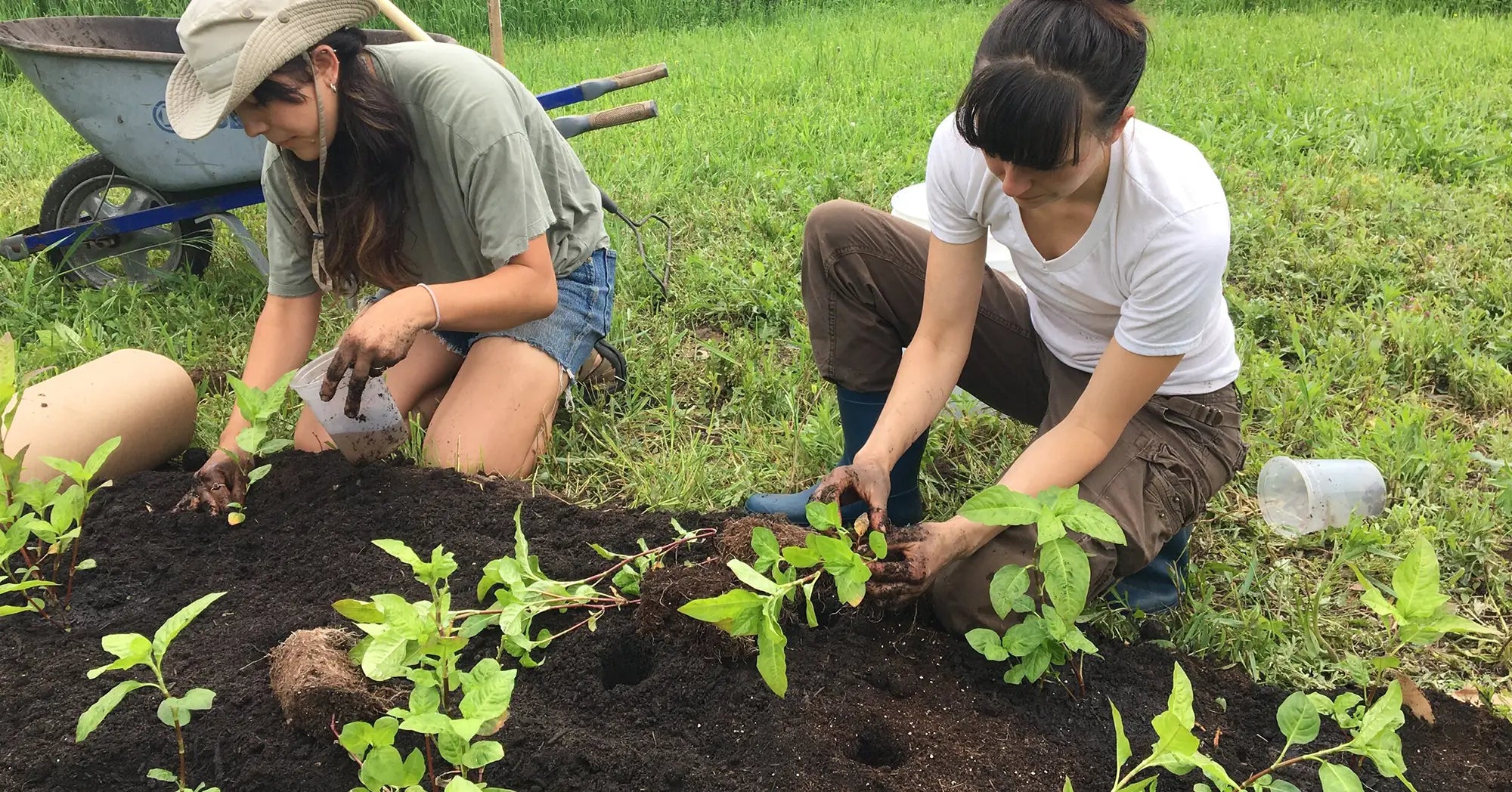
Indigo
Sashoonya is currently growing Persicaria tinctoria in collaboration with several local farms, as an exploration into local farm to fiber systems. We are exploring the possibilities of color in this climate, and learning about the varied history and techniques of indigo. This plant, with its origins in Asia, yields a beautiful blue color. We are evaluating the challenges and possibilities of growing this species of indigo as a source of sustainable textile color. We hope to grow this plant as a way of sustaining important, non-toxic form of natural color and an exploration into its heritage and cultural meaning. We believe working with nature while understanding and honoring our cultural past can be healing for our ecosystems and our cultural heritage. Narrative is an important piece of our work, and we would like to share knowledge about the materials we use to deepen our connections to the pieces we create.
Indigo is a dye plant rich in complex history. Many cultures have rich histories with indigo, each with their own textile techniques and traditions. Different varieties of indigo grow all over the world, in Asia, Africa, and Europe, and have been a highly prized product in trade for centuries. With this high demand came ties to slavery and colonization. Here in North America, Indigo became the top export of Charleston South Carolina in the early 1700s because Europeans wanted their own source of Asian Indigo, leading to the legalization of slavery in Georgia and the increased import of African slaves. This is one of several examples of the complicated history of Indigo. It is important to acknowledge and learn about the role this history plays in the spread and use of indigo even today.


















